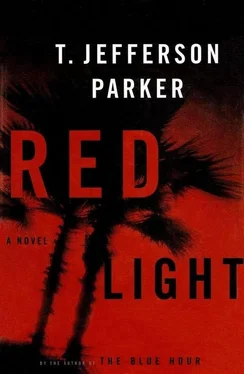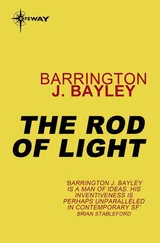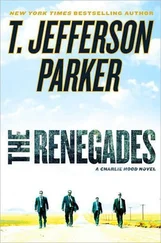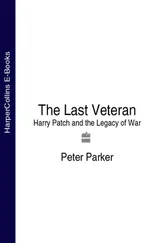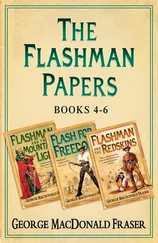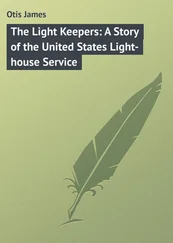“Things can be looked at in this way.”
“Philosophize later, creep. Print now.”
James Gilliam, Director of Forensic Services, had left an emphatic message on the While-You-Were-Out pad on Merci Rayborn’s desk: See me immediately, bring Zamorra. He had left the same message on her voice and E-mail.
Gilliam, excitable as a stone, had something hot.
Zamorra apparently got the same message. On their way down to the lab he told Merci that he might have to leave the powwow early. Janine was undergoing a procedure the next morning and he needed to arrange some things. He’d have time after to hit the Bay Club and check Moladan’s story.
“I hope it goes well,” Merci said. Lame, she thought. But Zamorra was vague about everything so you had to be vague right back. It was only through the constant department buzz that Merci had learned Janine’s diagnosis: brain tumor. Zamorra had never actually said those words to her.
“It’s an experiment,” he said.
She waited for elaboration and got none. The word “experiment” sent a little shiver up her spine. This was the most forthcoming her partner had ever been, so there was no use pressing it.
“Let me know, Paul, if there’s anything I can do.”
“There isn’t.”
She wanted to tell him about Hess and Hess’s cancer, how he had been beating it even though the stats had said it would kill him. Back then — two years, three months and twenty-four days ago — she had believed that her hope and will could change things. Now she didn’t. But she believed you needed to hope and will anyway, just in case. Although just in case wasn’t going to do Paul or Janine Zamorra any good at all right now.
They took the stairway down. She listened to the sound of Paul’s hard-soled brogues on the steps, comparing the noise to the cushioned thump of her duty boots. She wore the boots with almost everything except a skirt because they were stable and comfortable and looked badass. Three pair. Man Friend Number Two could have been wearing duty boots, she thought.
The December wind whipped up through the stairwell and she felt the cold air on her face. The naked black sycamores by the courthouse shivered. Merci buttoned up her windbreaker and jammed her hands in the side pockets.
“I liked the way you handled Moladan back there,” she said. Something to cheer Paul up, get his mind off things. “Whatever look you had on your face when he went rabid, it worked.”
“I was thinking about Janine.”
What do you say to that? She imagined what Moladan must have seen in Paul: a dark, slender, hate-faced man who’d just slipped off his coat to more easily draw down or thrash the living shit out of him. Zamorra had transferred in from Santa Ana P.D. a few years back. Santa Ana was a tough city. He had arrived with an aura of danger about him — rumors about punching out homeboys three at a time, something about the Golden Gloves gym up in Westminster, about a temper you didn’t want to see. His dad was a junior state something-or-other weight champ.
When Merci first met Paul she thought his quiet manners and physical stillness were some kind of shtick. After a while it came to seem authentic. He was just quiet and didn’t move around a lot and if that made people uncomfortable, it was fine with her. When he opened doors for women he made it look cool. So when Sheriff Brighton asked her what she thought of partnering up with Zamorra she said okay. He was dark and solitary, but that was better than being a macho windbag like some cops tended to be. In the three months she’d been working him, Merci felt as if she knew Paul Zamorra only a tiny bit better than when she’d first met him. She knew he had nice trim suits but not of them.
The mystery was good, though, because she believed most people were more interesting with their secrets intact.
“Nice call on the Eastern European accent,” said Paul. “It had him thinking.”
Gilliam let them into his office and shut the door. This was new. Usually he walked them through the lab, showed them hair and fiber samples under the scopes; the print cards on an overhead projector; the bullets and casings; the sketches for bullet-path reconstruction; the tape lifts for gunshot residue; the dummies and samples for bullet impact reconstruction; the knives and blunt instruments; and the autopsied body if wanted to see it. Gilliam wanted them to see everything.
He sat behind his desk in a fresh white lab coat. He had a close file in front of him and a doleful expression on his face.
“Thanks for coming,” he said. “I’ll go through the early lab stuff and the medical autopsy right here in the office. After that, we’ve got a problem to discuss. I think it’s a problem.”
Merci said nothing. She’d never seen Gilliam so glum. He always avoided meeting her eyes with his own because he thought she was attractive, something that had taken her five years to understand. She didn’t know what to do about that, except to ignore the problem and respect the man. She could live with secrets; words were what threw her.
“Fine,” said Zamorra.
“Let’s start with the body,” said the director.
Aubrey Whittaker had died of massive coronary failure due to shot. The bullet had entered and exited the right ventricle, making a 1½ centimeter entry tear and a 1¾ centimeter exit passage. Missed the ribs, the sternum, missed the vertebrae. Death was almost instantaneous judging from the lack of edema at the entry and exit wounds and the level of blood histamines. The projectile shock was prodigious, Gilliam said: The impact was great enough to burst capillaries in her eyes. From the tearing of the dress, the blast destruction of flesh and the tattooing of unburned powder around the entry wound, Gilliam said it was either a Zone 1 or a Zone 2 gunshot — contact or near contact with the body. She had eaten within two hours of expiration: chicken, a mixed green salad with pine nuts and tomato. No alcohol. No drugs. No evidence of recent sexual activity, forced or otherwise. No evidence of strangulation, blunt force trauma, maiming or torture. No signs of struggle.
“We found four very light abrasions, one almost directly over each shoulder cap, one in the middle of each lower armpit. Ante or post mortem — we can’t say. They were very difficult to see until we hit them with ultraviolet.”
Merci tried to picture the scene, then wrote in her blue notebook: drag marks.
“Now, for the guns and ammo,” said Gilliam. He opened his file to read from the criminalist’s report. “You can check with Dave Sweetzer for follow-up, but here’s the gist of his findings.”
The shell casing found by Lynda Coiner was a .45-caliber Colt; center-fire, of course. This information came from the headstamp on it. The cycling toolmarks indicated an extractor and ejector, thus a semiautomatic.
“Dave makes a big note here for you guys,” said Gilliam, “that the casing wasn’t new. It had been fired before and reloaded at least once. Keep that in mind when you make your case for the DA.”
“We’re thinking sound suppressor,” said Paul.
“So is Dave. There wasn’t enough powder tattooing to match the tearing of the skin or the silk. The sooting isn’t enough, either. And the bullet wiping — that’s the ring of material around the hole where he looks for the lubricants — that wasn’t pronounced as it should have been in a contact shot. He suggests that two or three extra inches of a baffle would account for all that. Not to mention that nobody in an apartment house heard a forty-five go off. Of course, a forty-five caliber Colt is a good candidate for a sound suppressor. It’s subsonic by a couple hundred feet per second, so there’s no sonic crack to deal with. The bullet hole in the plate glass is consistent with a forty-five bullet. From the exit wound and the straight flight path Dave’s thinking a hard, jacketed round.”
Читать дальше
